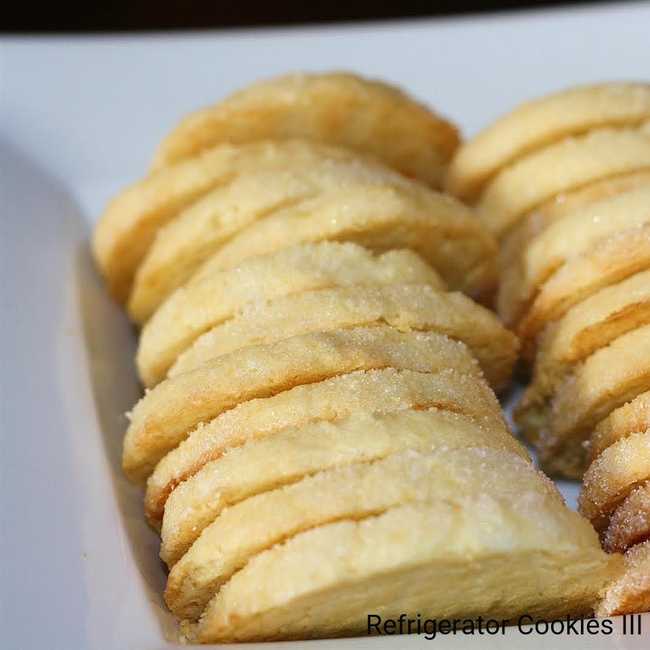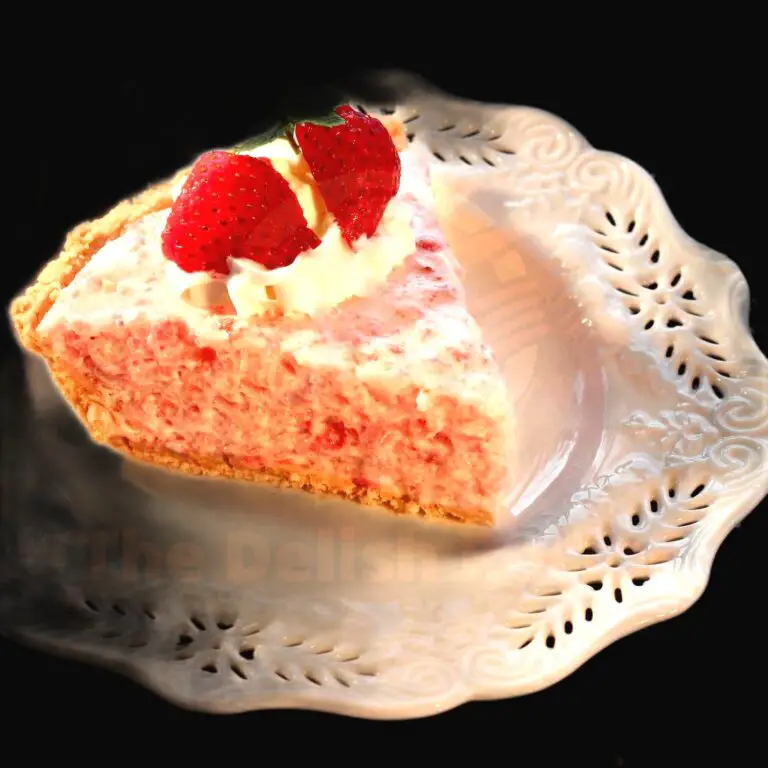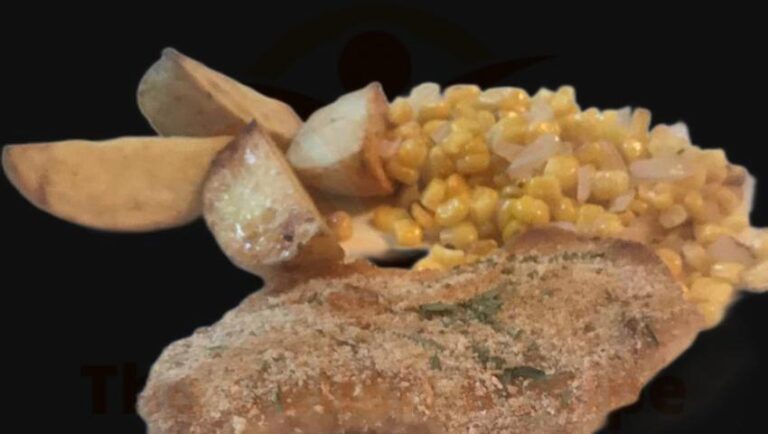Refrigerator Cookies III
These are great cookies to have on hand when the mood for something sweet strikes. They can be made ahead of time and stored in the refrigerator, then baked as needed. This recipe makes a large batch, so there will always be plenty to share (or not!). Ingredients 1 cup butter, softened 1 cup white…
These are great cookies to have on hand when the mood for something sweet strikes. They can be made ahead of time and stored in the refrigerator, then baked as needed. This recipe makes a large batch, so there will always be plenty to share (or not!).
Ingredients
- 1 cup butter, softened
- 1 cup white sugar
- 2 eggs
- 1 teaspoon vanilla extract
- 3 cups all-purpose flour
- 1 teaspoon salt
- ½ teaspoon baking soda
- ⅓ cup colored sugar for decoration
Instructions
1. In a large bowl, mix together the butter, sugar, eggs and vanilla extract.
2. In a separate bowl, stir together the flour, salt and baking soda.
3. Gradually blend the dry ingredients into the wet ingredients until everything is mixed thoroughly with your hands.
4. Divide the dough into 3 parts and shape each part into a cylinder that is 1 ½ inches in diameter and about 7 inches long. Roll each cylinder in colored sugar (or finely chopped nuts).
5. Chill for several hours or overnight before proceeding to the next step.
6. Heat oven to 400 degrees Fahrenheit (205 degrees Celsius). Cut slices that are ¼ inch thick from each cylinder of dough and place them on greased cookie sheets . Bake for 8 to 10 minutes then cool once done..
Nutrition Facts
- Serving size: 1 cookie
- Calories: 80
- Fat: 4 g
- Saturated fat: 2.5 g
- Unsaturated fat: 0.5 g
- Trans fat: 0 g
- Carbohydrates: 10 g
- Sugar: 5 g
- Protein : 1.2

What are the 6 Classification of cookies?
There are six classifications of cookies: Molded, Dropped, Rolled, Pressed, Refrigerator and Bar.
Molded cookies are usually round in shape and are formed by rolling the dough with your hands. The most common type of molded cookie is the sugar cookie. To make a sugar cookie, you would roll the dough into a ball and then flatten it with your hand. You can also use cookie cutters to create different shapes.
Dropped cookies are usually the easiest kind of cookie to make. They are made by dropping spoonfuls of dough onto a baking sheet. The most common type of dropped cookie is the chocolate chip cookie. Chocolate chip cookies are made by adding chocolate chips to a basic cookie dough recipe.
Rolled cookies are made by Rolling out the dough on a floured surface and then using cookie cutters to cut out desired shapes. One popular type of rolled cookie isthe gingerbread man Cookie. These Cookies Are Often Decorated With Royal Icing Or Candy Pieces After Baking.
What are the classifications of cookies?
There are eight basic types of cookies: bar cookies, drop cookies, fried cookies, molded cookies, no-bake cookies, refrigerator (ice box) cookies, rolled cookies and sandwich cookies. Each type of cookie has its own distinctive characteristics.
Bar Cookies: Bar cookies are made by baking a dough or batter in a pan and cutting it into bars when it is done. Brownies and blondies are examples of bar cookies.
Drop Cookies: Drop cookies are made by dropping spoonfuls of dough onto a baking sheet and flattening them slightly before baking. Chocolate chip cookies and peanut butter cookies are examples of drop cookies. Fried Cookies: Friedcookie recipes usually begin with a dough that is refrigerated for several hours or overnight to firm up before being rolled out thin and cut into shapes. The shapes are then fried in hot oil until golden brown. Examples of fried cookies include cream puffs and éclairs.
Molded Cookies: Moldedcookies are made by pressing dough into molds to create shaped biscuits. Shortbread is an example of a molded cookie.
No-Bake Cookies: As the name suggests,no-bake cookie dough does not need to be baked; instead it is cooked on the stovetop or in the microwave until set. Oatmealcranberrywalnut bites are an example of no-bake cookie recipe.
Refrigerator (Ice Box) Cookies: Refrigerator(or ice box) cookies should be prepared ahead of time as they need to be chilled in the fridge for at least 2 hours – or preferably overnight – before being slice and baked.
Why are they called refrigerator cookies?
Refrigerator cookies are so named because they require refrigeration to set properly. This type of cookie was developed in the 1920s, as recipes for icebox cakes began appearing in cookbooks and national publications. These icebox cakes eventually evolved into icebox cookies, and then into today’s refrigerator cookie recipes.
The key difference between regular cookies and refrigerator cookies is that the latter must be chilled in order to set properly. This chilling process helps the cookies to retain their shape and prevents them from spreading too much during baking. As a result, refrigerator cookies tend to be thicker and more dense than regular cookies.
There are a few different ways to make refrigerator cookies. One method is to simply chill the dough before baking it; another is to bake the cookies, then chill them afterward; and yet another is to bake the Cookies on an ungreased cookie sheet, then place them in the freezer for a few minutes before transferring them to a wire rack or container.
What are the 8 classifications of cookies?
There are 8 classifications of cookies: drop, bar, rolled, molded, sandwich, no-bake refrigerator (or ice box), and pressed.
Drop Cookies: Drop cookies are the type most people think of when they imagine making cookies at home. They generally involve large bowls of cookie dough that is dropped by spoonfuls onto baking sheets. This method results in uniform cookies that are often soft and chewy. Classic drop cookie recipes include chocolate chip and sugar cookies.
Bar Cookies: Bar cookies are made by spreading batter or dough into a baking pan and then cutting them into bars after they have baked. These can be either thick or thin, depending on the recipe. Brownies and blondies are examples of bar cookies.
Rolled Cookies: Rolled cookies are made by rolling out dough on a flat surface before using cookie cutters to create shapes out of the dough. After cutting out the desired shapes, thecookies are transferred to a baking sheet and baked until set. Rolled cookies often have a more delicate texture than drop or bar cookies as they require less handling during preparation. Common rolled cookie recipes include gingerbread men and snickerdoodles.
Molded Cookies: Molded cookies are made by pressing dough into molds before baking them until set. The molds can be either metal or silicone, and they come in many different designs ranging from simple to intricate.”>More complicated molded cookie recipes may require chilling the dough before pressing it into the mold.”> Examples of molded cookie recipes include spritzgeback (pressed)and linzer tarts (cut-out).
What are the 3 classifications of cookies?
There are three main types of cookies: bar cookies, drop cookies, and molded cookies. Bar cookies are made by pressing the dough into a pan and then cutting it into bars. Drop cookies are made by dropping spoonfuls of dough onto a baking sheet. Molded cookies are made by shaping the dough into specific shapes using molds or cookie cutters.
Ask your question to our expert chef and get instant help.
Please provide details about your query with the recipe name.




